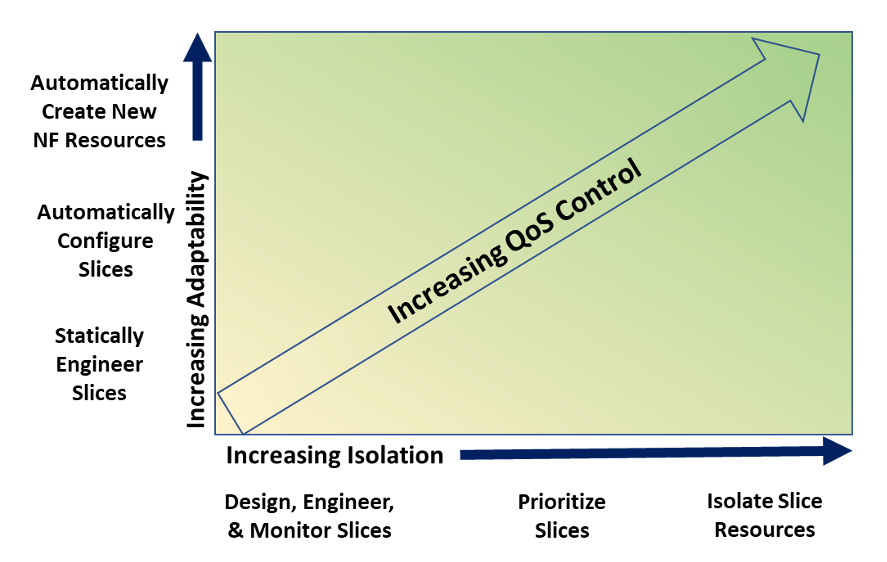The Future of Network Slicing
Prioritize slices
With shared equipment that has priority queueing, admission control, or other features that allow paths to be given priority above other services or slices, slices are given the appropriate QoS parameters. This can mean a low priority for mMTC slices.
Isolate slice resources
Soft isolation of the NF resources for a slice, such as is done in data center networking by companies like Kaloom and Pluribus, can provide additional security and fine-grained control of the resources.
Adaptability of slices
The second technique to gain control of the QoS parameters is to make the slices more adaptable to changing network conditions or customer requirements. This requires capabilities both in the slicing control software as well as the network elements themselves.
Statically engineer slices
By setting aside resources and setting service priorities in the network during the provisioning process, slices can be created. Then, if conditions change, they can be reprovisioned using the standard manual processes.

Figure 1: Slicing techniques
Automatically configure slices
Providing a way of configuring slices both initially and throughout their lifecycle gives greater control over the QoS, allowing the systems to anticipate and mitigate against expected QoS violations by reconfiguring the parameters of the slice (which resources are used, routes taken, and so on) or even reconfiguring the other slices sharing the same resources.
Automatically create new network function resources
If the network resources that the slice uses have been virtualized, then more NF capacity can be automatically created, and the slice configuration changed to take advantage of the new capacity.
Network slicing solutions basic architecture
The basic architecture of end-to-end slicing managers is shown in Figure 2 on next page. They include the full set of P-A-I-D functions (provisioning, assurance, inventory, and design), interacting with upstream systems that include the additional business functions, and, on the south side, with



















